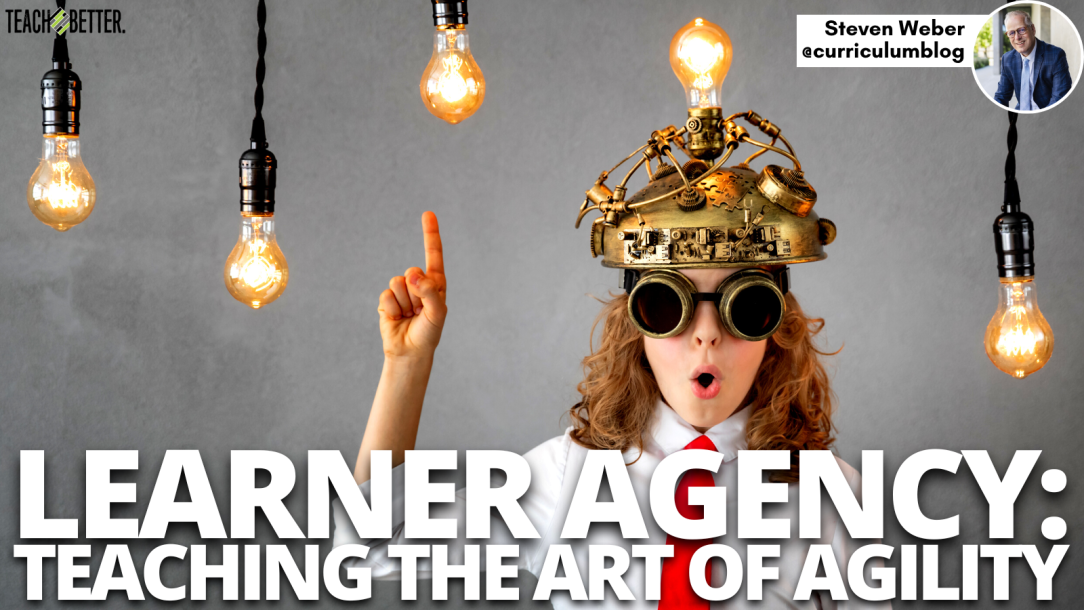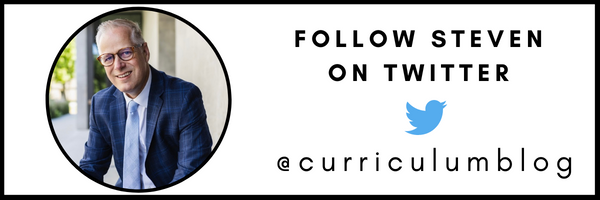TL;DR:
- Learner agency empowers students through student voice, choice, innovation, and authentic tasks, allowing them to take ownership of their learning.
- Teachers can create opportunities for learner agency by implementing strategies such as project-based learning, arts education, communication, problem-solving, and reflection.
- Learner agency enables students to set goals, reflect on their progress, and transfer their understanding in new situations, developing essential skills like adaptability and resilience for lifelong learning.
Learner Agency: Teaching the Art of Agility
When I was in sixth grade, our teacher gave us an assignment that required a small group of students to create a video. At the time we did not have a Smartphone or Flip. Our teacher allowed us to use a very expensive VHS camera. This was one of the first memories I have of learner agency.
At the age of twelve, I did not know the term learner agency. However, our group understood the power of student voice, choice, innovation, and authentic tasks. We were given the chance to own our learning. When students own their learning, they “develop the capacity to engage strategically in their learning without waiting to be directed” (the Institute for Personalized Learning, 2015).
Learner agency is when the teacher empowers each student to make decisions, embrace challenging tasks, and pivot as needed. “In 2023, employers are placing a premium on candidates committed to professional development, continuous learning, and upskilling” (Dennison, 2023). Teaching content, critical thinking, and literacy are still priorities for classroom teachers. Teaching students agility is becoming an increasingly important strategy for developing lifelong learners.
Learner agency occurs when students set goals, reflect on their progress, and transfer their understanding to new situations. Click To TweetWhat Is Learning Agility?
“Learning agility is our ability to learn, adapt, unlearn, and relearn to keep up with constantly changing conditions” (Korsten, 2020).
How Can Teachers Create Opportunities for Agency and Agility?
- Arts Education
- Authentic Tasks
- Communication
- Complex Problems
- Concept-Based Teaching and Learning
- Contribution
- Debate
- Design Thinking
- Document Based Questions
- Entrepreneurship
- Essential Questions
- Innovation
- Inquiry Learning
- Internships
- Outdoor Education
- Personalized Learning
- Problem-Solving
- Project Based Learning
- Reflection
- Resilience and Adaptability
- Risk Taking
- Scenario Thinking
- Self-Regulation
- Student Choice
- Student Goal Setting
- Writing
Shifting From Compliance to Learner Agency
When students move from compliance to contribution they are empowered to own their learning. Learner agency occurs when students set goals, reflect on their progress, and transfer their understanding to new situations. When a teacher posts twenty-five projects in the hallway and they all look like the same project, there is little evidence of learner agency.
In a previous school district, I witnessed high school students build a house. At the end of each school year, the house was donated to Habitat for Humanity. The students had to build a house that would pass inspection. When students graduated from high school, they could drive through the community and see homes that they had built with their own hands. This project combined multiple skills that students can use in the workforce, even if they do not choose to become carpenters, electricians, masons, or roofers.
Students may not be engaged in math or science classes, but project-based learning helps students apply their understanding and solve real-world problems. Learner agency should not be reserved for the last day of a unit. It must be embedded in assignments, small group activities, quick writes, assessments, and projects. The World Economic Forum lists Resilience, Flexibility, and Agility as third on its Top Ten Skills of 2023 (World Economic Forum, Future of Jobs Report 2023). Agility is a life skill that all learners will need. How can we equip learners for the game of life?
[scroll down to keep reading]Questions for School Teams
- When have we intentionally created a classroom environment that supported learner agency? Share with your co-workers.
- What would learner agency look like in the unit that we are currently planning/teaching?
- Which instructional strategies help teachers shift from teacher ownership to student ownership and/or co-taught classrooms (teacher and students share ownership)?
- How do we design lessons so students learn life skills such as the ability to learn, adapt, unlearn, and relearn?
- Can you remember a lesson as a K-12 student that empowered you and provided students with learner agency? Describe this lesson or assignment to your co-workers.
References
Dennison, K. (2023). The importance of upskilling and continuous learning in 2023. Forbes. Retrieved from https://www.forbes.com/sites/karadennison/2023/04/13/the-importance-of-upskilling-and-continuous-learning-in-2023/?sh=1583ef9e5909
The Institute for Personalized Learning (2015). Learner agency: The missing link. Retrieved from https://institute4pl.org/index.php/2015/09/14/learner-agency-the-missing-link/
Korsten, O. (2020). Learning agility: What it is and how to assess it. Harver. Retrieved from https://harver.com/blog/learning-agility/#What
World Economic Forum. (2023). Future of jobs 2023: These are the most in-demand skills now – and beyond. Retrieved from https://www.weforum.org/agenda/2023/05/future-of-jobs-2023-skills/
About Steven Weber
Dr. Steven Weber is a curriculum leader. He has served on multiple state and national boards. His areas of research include curriculum design, multiplying leaders, professional learning, and school leadership.




